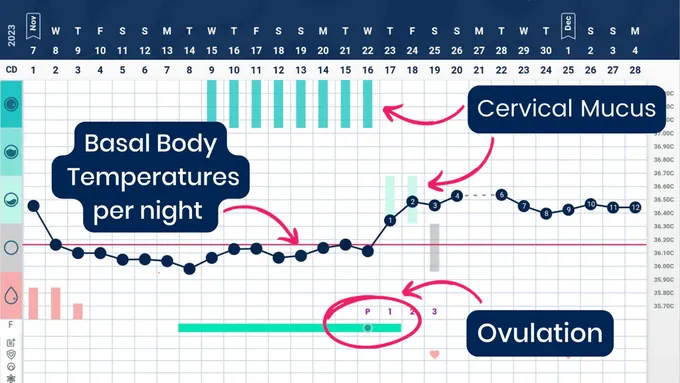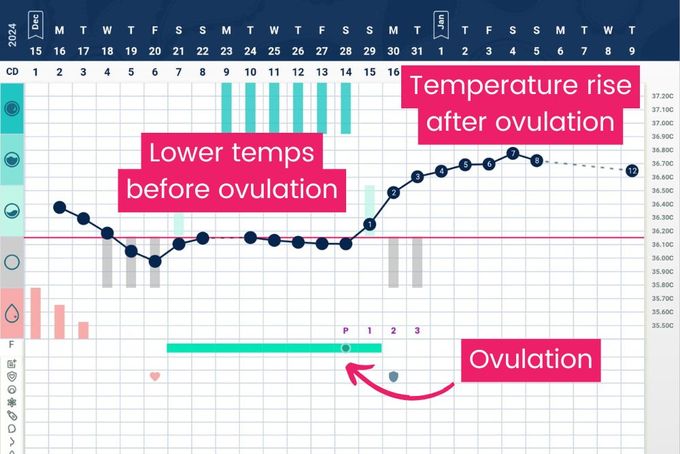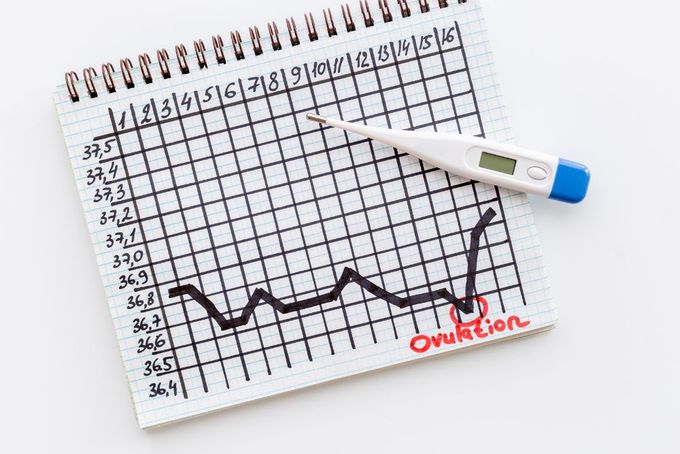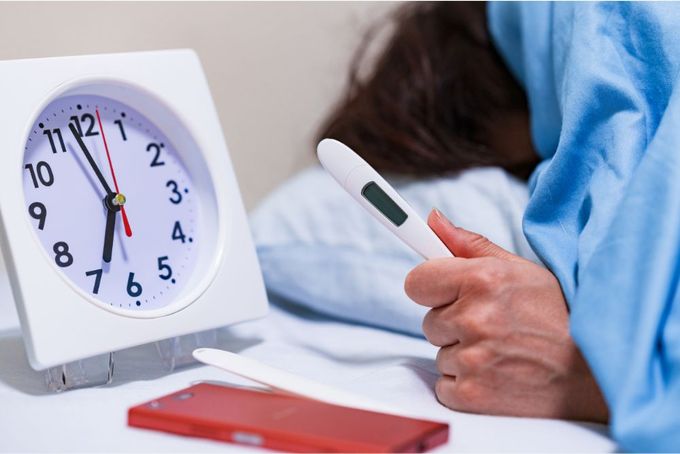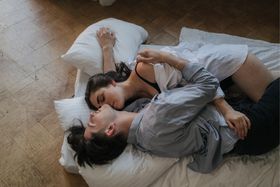Basal Body Temperature: Why It's Important for Tracking Ovulation
Updated May 14, 2025
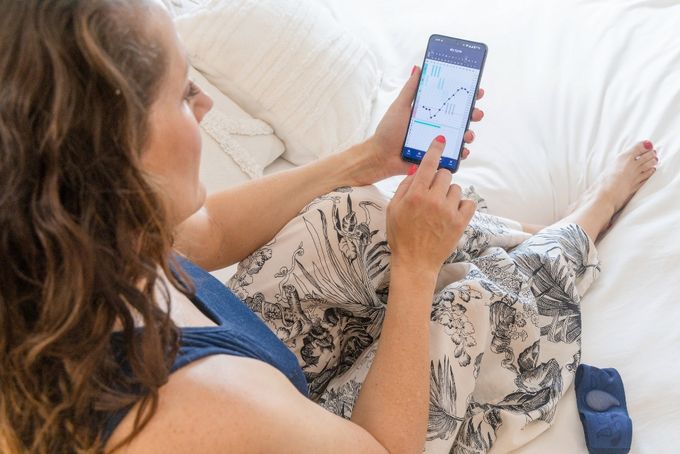
Have you ever considered tracking your basal body temperature (BBT)? Are you wondering why you might want to track it?
- After a few months of trying to conceive, you might start to wonder what you can do to improve your chances of getting pregnant. Tracking and understanding your cycles is one option!
- You might be exploring how to use basal body temperature as a way for a variety of family planning intentions.
- Perhaps you’re experience health complications and want to check if you’re still ovulating - and if the lifestyle, diet, and medication changes you've made are making a difference.
What is BBT?
Basal body temperature is a measure of your core resting temperature. This measurement can tell you a lot about where you are in your cycle - after all, estrogen helps suppress body temperature, while progesterone has the opposite effect. The result is a clear distinction in temperatures before ovulation (when estrogen is higher) and after ovulation (when progesterone is higher). Charting your BBT is one common way to track your ovulation, and it will help you to understand when you have ovulated each month.
But, if learning to identify your fertility window seems daunting, know you are not alone. Luckily, the daily task of charting your BBT as a method of tracking ovulation can be simplified if you have the right tools at your bedside.
Understanding Your BBT
According to the University of Michigan Medicine Center, BBT is your body's temperature when at rest and it can be tracked to identify ovulation.
Tracking your BBT is a part of most fertility awareness based methods, which encompasses both natural family planning (NFP) and fertility awareness methods (FAM). We also recommend tracking your cervical fluid and, if you choose to, your cervical position, to better understand your fertile window.
BBT fluctuates throughout your menstrual cycle each month. According to Our Bodies Ourselves, "The important concept to understand is your pattern of low and high temperatures. Your temperatures before ovulation fluctuate in a low range, and the temperatures after ovulation fluctuate in a higher range. The trick is to see the whole and not to focus so much on the day-to-day changes."
Like they said, it's important not to get hung up on changes from one day to the next. Instead you should look for overall trends in low and high temperatures.
What you'll notice is your basal body temperature usually rises within a day or so of ovulation to indicate that ovulation has occurred. A very small percentage of women may see a temperature rise starting the day of or even the day before ovulation.
It is important to note that some factors may influence your BBT. For example: sickness, alcohol use, disturbed sleep, using a heated blanket, or air-conditioning.
If you are using BBT for any intention of family planning, you will want to start tracking your BBT daily. You can then record the temperature on a paper chart or in a fertility tracking app like Tempdrop or OvuView (OvuView automatically syncs with Tempdrop).
Ultimately, by tracking your basal body temperature and reviewing your charts, you will start to see temperature patterns that will help you identify your fertility window each month and understand when you are ovulating.
Why Track Basal Body Temperature?
Each cycle your body releases an egg (ovulation). Planning baby-making activities around ovulation may help you to achieve pregnancy more quickly. In fact, one study found couples using fertility awareness had triple the chance of conceiving when compared to couples not using fertility awareness.
This knowledge can also be used to know when to avoid those same activities if now isn’t the time for you to get pregnant. Typically when used for this purpose, you want to follow a specific method and use more than one indicator.
By learning to track your BBT, you will have a better understanding of when your body is ovulating. After the egg's release, your BBT will rise and stay in a higher range for 10-16 days.
However, it is important to understand that while you cannot predict ovulation with temperature alone, you can confirm ovulation has happened.
How to Track Basal Body Temperature
For some, tracking BBT comes with a bit of a learning curve. But once you have the right tools, it becomes second nature.
Traditionally, you would need to take your temperature using a special basal body thermometer (measuring accurately at least to a tenth of a degree in Fahrenheit or 5 hundredths of a degree in Celsius - most BBT thermometers read to the hundredth in both scales) as soon as you wake up, before you’ve moved or consumed anything, and preferably at the same time every morning.
Using a basal temp thermometer presents many challenges, especially for
- Parents caring for small children
- Shift workers
- Those who suffer from conditions like insomnia
When Sarah, a woman who was hoping to get pregnant, first started tracking her BBT with a basic digital thermometer, she often felt frustrated because she wasn't sure if she was getting accurate temperatures. Some mornings she would forget to take her BBT and other times she would fumble around in the dark trying to find her thermometer, leading to potentially inaccurate basal temps and anxiety about the accuracy of her charts.
Like Sarah, another challenge you might face when attempting to track your BBT is needing to take it at the same time every morning. Waking up at the same time every day isn't realistic for most people. Some women have found that to get accurate temps, they need to wake themselves up at the same time each day, for example, 4AM, take their temperature, and then go back to sleep until they would ordinarily wake up.
Doesn't sound like fun! These issues can introduce user error which reduces the accuracy of identifying your most fertile days each month.
Confidently Track BBT
One way to confidently track ovulation by recording your BBT and reduc user error is to use a Tempdrop.
Tempdrop is a first of its kind, a smart basal body thermometer used to learn your individual sleep patterns. It doesn’t rely on testing hormones or waking at the same time each day. Using its clever algorithms it filters out any disturbances traditionally impacting temperature readings (changes to room temperature, multiple wakings, poor sleep etc.)
Tempdrop is worn on your upper arm while you sleep. When you wake, you remove the device. Then, when you are ready and have a minute, you can sync it to your smartphone. It doesn’t send Bluetooth signals all night since you have to manually turn the Bluetooth syncing on. You can then view the data reading in the Tempdrop app. The app also displays your temperatures in a chart and allows you to add additional fertility signs and symptoms to it - meaning it’s an all-in-one solution for you!
As you continue to chart your BBT, you will gain a clear understanding of when you are ovulating. You can learn more about how Tempdrop works here.
Why BBT is Important for Tracking Ovulation
In this article, you learned information that is essential for understanding your basal body temperature and why it's important for tracking ovulation.
Knowing how to accurately identify ovulation signs by tracking your basal body temperature will help you understand when you are ovulating so that you can better understand your ovulatory cycle. It's one sure way to make your fertility journey more predictable.

